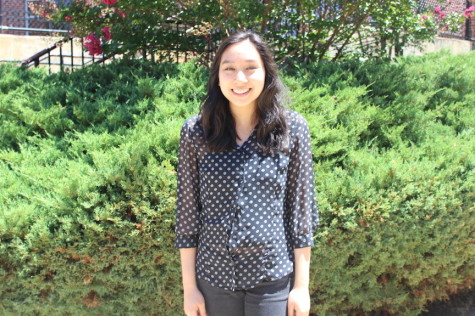#OscarsSoWhite and why racial bias awareness in media matters
January 29, 2015
Stereotypes, prejudice, and racial bias consistently plague the borders of modern-day America. Since the beginning of the country’s film and television industry, several races and ethnicities have experienced underrepresentation. Since the media sets the tone for values, morals, and beliefs, companies should attempt to diversify their characters and casts.
In 2014, American films significantly lacked people of color (POC) in leading feature roles. According to yearly box office results, many of last year’s top grossing movies, including Interstellar, Transformers: Age of Extinction, The Hunger Games: Mockingjay Part 1, and Maleficent, featured a predominantly white cast.
In 2013, despite their 17 percent make-up in the U.S., Hispanic people played merely five percent of speaking parts and remain the most underrepresented group in Hollywood. Black actors played only 14 percent of roles, and 17 percent of films failed to include any black actors at all. This year, the Oscar nominees comprise of exclusively white individuals, who also make up 94 percent of the voting body.
So why should we care? The movie industry should resemble all communities, including races, ethnicities, and genders, so that audiences can hear every passionate voice and every momentous story. While the Federal Communications Commission regulates interstate and international communications by radio, television, wire, satellite and cable, they recently failed to protect America’s input. With a shortage of minorities and women, diversified narratives rarely find their way to the screen.
“It’s disappointing that there’s an underrepresentation of POC in the film industry. A lot of young kids that watch movies won’t see themselves and aren’t getting the positive representation that they should be getting,” junior Dominique Harry said.
According to Nielsen Holdings NV, a global information and measurement company, Americans watch 34 hours of television a week. That equals 2,040 minutes and 122,400 seconds. However, some watching TV receive more representation than others. In an era with thousands of channels and hundreds of TV shows, most shows consist of the same content. Fully developed, white male characters are surrounded by lackluster attempts at female and POC characters. With such a diverse audience watching, this hardly seems fair.
If the audience resembles America’s diversity, why display one-sided storylines? How did a medium once praised for its freshness turn into nothing more than countless copies of cop shows, hospitals dramas, and love triangles? Television started as a “boy’s club,” and recent years have brought little change.
“There’s definitely still stereotypes prevalent in today’s television. Although we’ve made a shift to minorities being portrayed as normal people, we still have a long way to go,” senior Cain Henderson said.
Furthermore, because of the blatant disproportion, the media tends to inaccurately and negatively depict minorities. While movies certainly do not equate to reality, some individuals still turn to entertainment to form racial attitudes, which leads to the societal reinforcement of stereotypes and bias. Although 2014 provided some change to this pattern found throughout the media with Scandal, How To Get With Murder, and Agent Carter, television continues to reduce women and POC one-dimensional stereotypes and background characters. We need more Olivia Popes, Annalise Keatings, Mindy Lahiris, and Peggy Carters. We need more complex women on television. We need more shows starring POC characters not defined by their race, and less shows relying on racial stereotypes as a gag.





